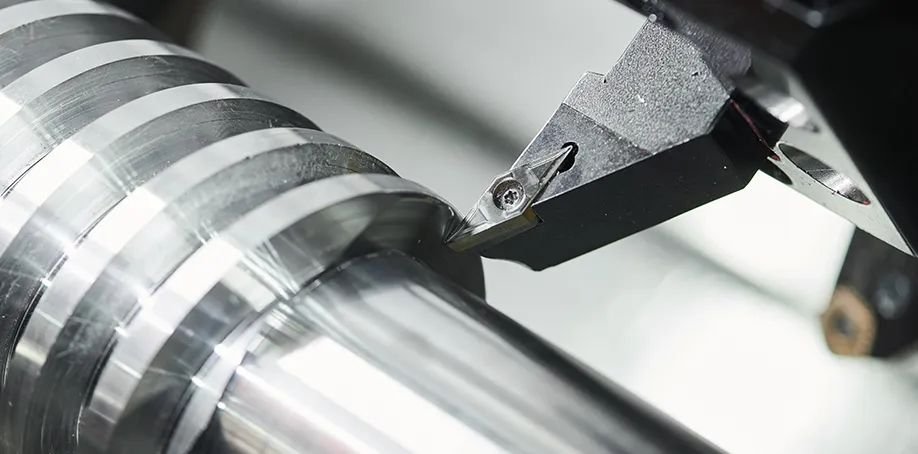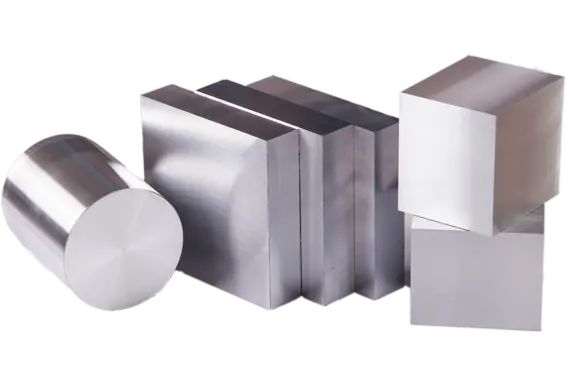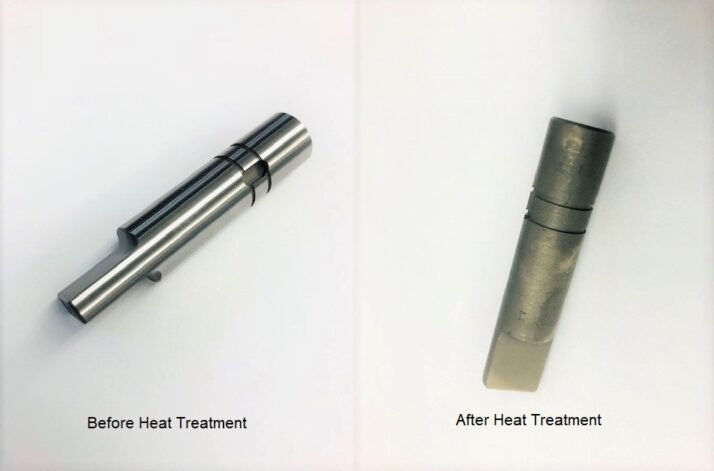The mechanical properties of a material refer to the deformation and damage characteristics exhibited by the material under the action of external forces (e.g., load, temperature change, etc.). These properties are core parameters in material design and engineering applications, and directly affect the service life, safety and reliability of materials.
The performance qualities of materials roughly contain strength, stiffness, hardness, deflection, elongation, elasticity, toughness, rigidity and plasticity, etc. This paper goes through the definition, characteristics, application scenarios and core differences of each of these.
Table of Contents
1. Strength
Definition: Strength is the ability of a member to resist damage, or the ability of a material to resist permanent deformation or fracture.
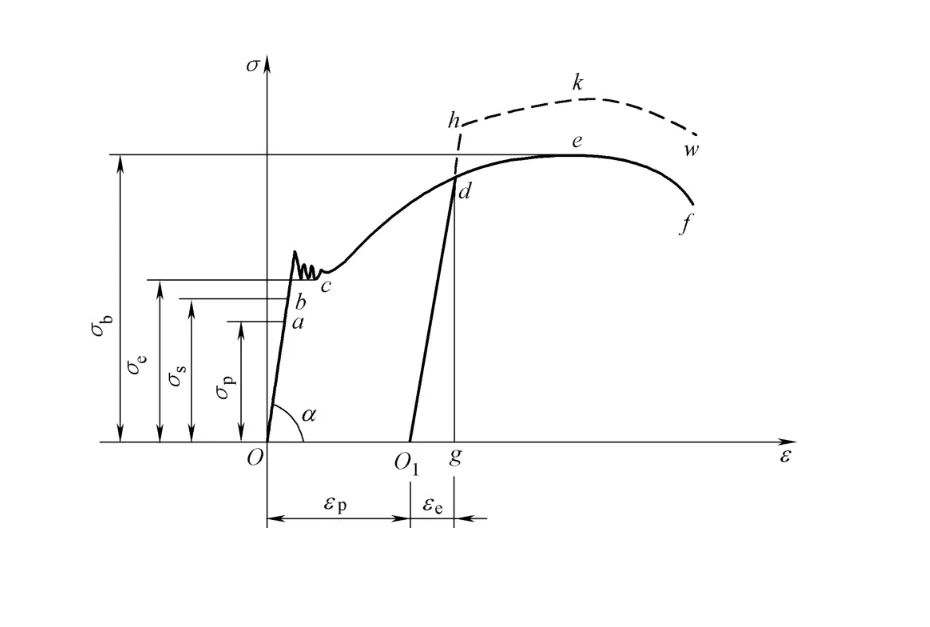
Performance Parameter:
Yield Strength (Yield Strength): For metal materials that do not yield significantly, the stress value that produces 0.2% residual deformation is specified as its yield limit. The lower yield limit is usually referred to as the yield strength.
The figure δe above shows the yield strength of a material.
Tensile Strength (Tensile Strength): indicates the material’s resistance to maximum uniform plastic deformation, the maximum stress that the material can withstand before tensile damage.
The figure δb above shows the tensile strength of a material.
Strength of materials is a central concept in materials science and engineering, referring to the ability of a material to resist damage (e.g., fracture, deformation, etc.) when subjected to a force. Its application permeates almost all industrial and technological fields. These include: construction, mechanical engineering, aerospace, automotive, electronics, medical devices, etc.
2. Stiffness
Definition: Stiffness is the ability of a material or structure to resist elastic deformation under external forces.
Performance Parameter: The higher the stiffness, the smaller the deformation of the material under the same external force. Stiffness is closely related to the modulus of elasticity of the material, which is a property of the material itself, reflecting its intrinsic ability to resist deformation (e.g., Young’s modulus E).
Modulus of elasticity: The modulus of elasticity is defined as the ratio of stress to strain.

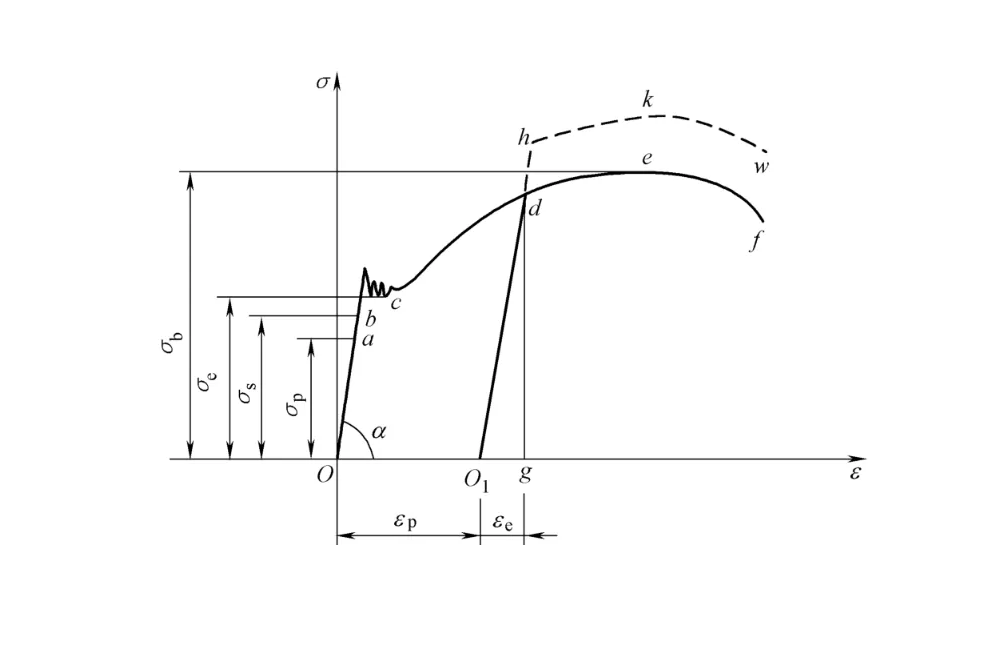
Modulus of elasticity is an indispensable parameter in materials science and engineering design, which directly determines the deformation characteristics of materials when subjected to force. Understanding the meaning and application scenarios of different moduli can help to select materials reasonably and optimize the structural design.
Types: Stiffness can be categorized into tensile stiffness, bending stiffness, shear stiffness and torsional stiffness according to the deformation mode.
Stiffness is a key property to ensure the function and safety of engineering structures. Insufficient stiffness can lead to excessive deformation, affecting accuracy or triggering failure. Design requires a combination of material selection and geometric optimization to balance stiffness with other properties (e.g., strength, weight). Understanding the difference between stiffness and strength can help rationalize material selection and improve design reliability.
3. Hardness
Definition: The ability of a material surface to resist localized indentations or scratches.
Type: Brinell hardness (HB), Rockwell hardness (HRC), Vickers hardness (HV).
Characteristics: high hardness is usually good abrasion resistance (such as diamond hardness is extremely high), but there is no direct correspondence with the strength.
Physical significance: hardness reflects the resistance of the material surface to external forces, especially in the contact stress performance. Higher hardness materials are usually more resistant to wear, but may be accompanied by increased brittleness. Hardness testing is critical in material selection, quality control and process optimization.
Hardness is a reflection of a material’s overall performance and requires the selection of an appropriate test method for the specific application. Understanding the relationship between hardness and material composition, process, and properties can help optimize material design and engineering applications. For example, gear materials need to balance high hardness with fatigue resistance, while rubber seals need to ensure elasticity through Shore hardness.
4. Deflection
Definition: Deflection refers to the elastic displacement of a structural member (e.g., beam, plate, column, etc.) under the action of an external force (load). For example, a bridge will bend downward when a vehicle passes over it, and the vertical displacement of this bending is the deflection.
Calculation formula:
Calculation of deflection depends on the type of load, boundary conditions (mode of support) and material properties.
Simply supported beams are subjected to concentrated loads:

Influencing factors:
Load magnitude: The higher the load, the greater the deflection.
Material properties: the higher the modulus of elasticity 𝐸E (e.g., steel), the smaller the deflection.
Cross-sectional properties: the larger the cross-sectional moment of inertia 𝐼I (e.g., increase the height of the beam), the smaller the deflection.
Support conditions: beams fixed at both ends deflect less than simply supported beams.
Span: an increase in span 𝐿L significantly increases the deflection (proportional to 𝐿3L3 or 𝐿4L4).
Physical significance: The deflection reflects the stiffness of the structure, the greater the stiffness, the greater the resistance to deformation and the smaller the deflection.
Excessive deflection may lead to: failure of the structural function (e.g., deformation of machine tool spindles affecting accuracy), damage to non-structural elements (e.g., cracking of walls), discomfort for users (e.g., pronounced wobbling of floor slabs).
5. Elongation
Definition: Elongation refers to the percentage of the elongation of the scalar portion of the material after tensile rupture and the original scalar length, calculated by the formula:

Where L0 is the original scalar length, Lf is the scalar length after fracture.
Characteristics:
Scale distance dependence: elongation is affected by the scale distance of the specimen. For example, the elongation of a short pitch specimen is usually higher than that of a long pitch specimen (e.g., 5x diameter vs. 10x diameter specimen).
Type of deformation: Includes uniform deformation and localized necking, which is significant in plastic materials.
Application: Reflects the overall ductility of the material and is suitable for assessing the plasticity of the material during the uniform deformation stage.
6. Reduction of Area
Definition: Section shrinkage refers to the percentage reduction in cross-sectional area from the original area after fracture of the material, calculated by the formula:

Where A0 is the original cross-sectional area and Af is the minimum cross-sectional area after fracture.
Characteristics:
Scale distance independence: only focus on the local deformation at the fracture, not affected by the specimen scale distance.
Measurement difficulties: need to measure the irregular cross-sectional area after fracture accurately, may not be sensitive to brittle materials (such as cast iron).
Application: Reflects the local plastic deformation capacity of the material, especially in the necking phase.
7. Poisson’s ratio
Definition: Poisson’s ratio refers to the material’s one-way tensile or compressive, transverse positive strain and axial positive strain ratio; also called transverse deformation coefficient, which is reflective of the material’s transverse deformation of the elastic constant.
Formula: rod subjected to tensile or compressive load, the stress does not exceed the proportional limit, the absolute value of the ratio of transverse strain ε′ and axial strain ε is a constant, can be expressed as:

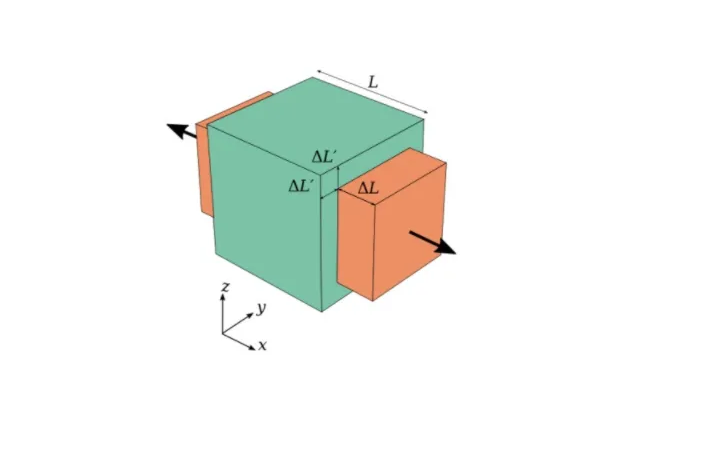
Since transverse strains are opposite in sign to longitudinal strains (e.g., longitudinal elongation and transverse contraction in tension), the introduction of a negative sign in the formula makes Poisson’s ratio positive.
Physical significance:
Poisson’s ratio reflects the multidimensional deformation characteristics of the material when subjected to force:
ν ≈ 0.5: the material is approximately incompressible (such as rubber), the volume is almost unchanged (transverse contraction is significant).
ν ≈ 0: the material is hardly deformed laterally in tension/compression (e.g., cork).
ν < 0 (tensile-expansive material): material expands laterally when stretched and has a special structure (e.g., honeycomb material), used in vibration damping, energy absorption, etc.
8. Elasticity
Definition: The ability of a material to recover its original shape after unloading. ab section is the elastic section.
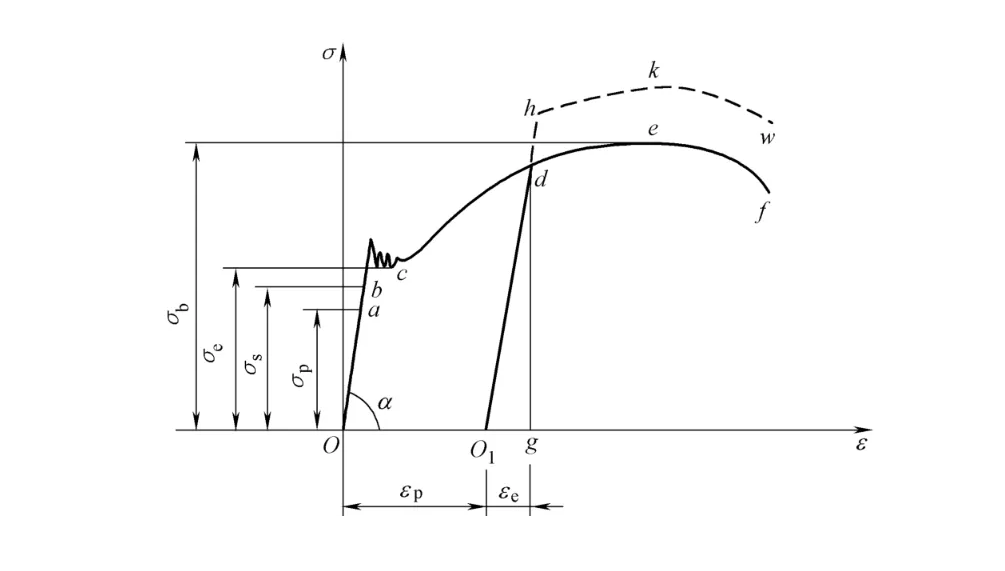
Core indicator: elastic limit (maximum stress to which the material can fully recover).
Characteristics: Elastic deformation is reversible (e.g., rubber bands spring back after stretching).
9. Toughness
Definition: The ability of a material to absorb energy before fracture (requires both strength and plasticity).
Core indicators: impact toughness (energy absorbed per unit volume), fracture toughness (resistance to crack expansion).
Characteristics: good toughness of the material, impact resistance (such as bulletproof glass), brittle materials (such as ceramics) and vice versa.
Applications: safety helmets, crash structures need high toughness.
10. Rigidity
Definition: The ability of a structure to resist deformation as a whole, combining material stiffness and geometry (e.g., section size).
Characteristics: Unlike stiffness, rigidity emphasizes the overall deformation resistance of a structure (e.g., aluminum beams with thicker cross sections can increase rigidity).
Application: Building frames require high rigidity to maintain overall stability.
11. Plasticity
Definition: The ability of a material to undergo permanent deformation beyond its elastic limit without breaking.
Core indicators: elongation (percent change in length after stretching), section shrinkage.
Characteristics: Plastic deformation is irreversible (e.g., metal stamping and molding).
Applications: Metal working (forging, stamping), dependent on plasticity

YPMFG Machining
YP-MFG is a leading manufacturer specializing in high-precision metal parts and CNC machining services. You Design It, We’ll Make It.

